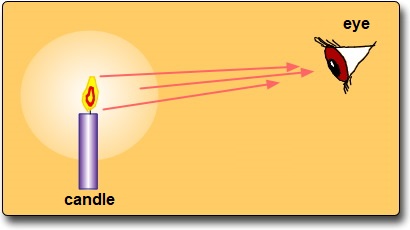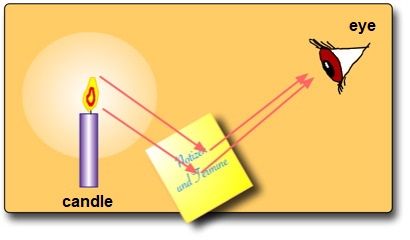Seeing
Our eyes are "light-receivers". Illuminated objects or iluminous objects send out light which enters our eyes - that is the reason why we can see. In the picture below you can see an example of a luminous object: light sent out by a candle. The light of the flame is spread in all directions. Only a fraction meets our eyes. This is indicated by the red arrows; only they meet our eyes.

Of course, we can also see objects which do not create light like a candle does. Such objects must, however, be illuminated by another light source. In the second picture you can see that the light source is the candle. Its light falls on the sheet of paper. Partly the light is absorbed, but the rest is reflected - again in all directions (we call this: light is scattered). Only a little fraction of this light meets our eyes and this enables us to see the sheet of paper. The course the light takes from the candle, over the paper and finally into the eye is indicated by the red arrows.

